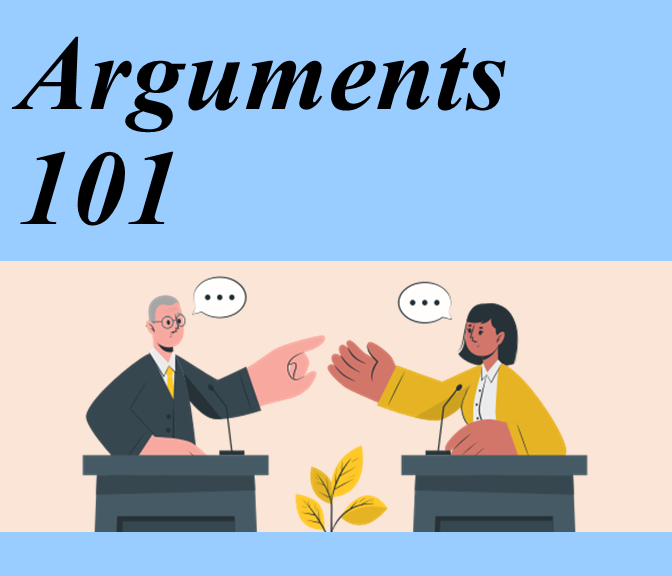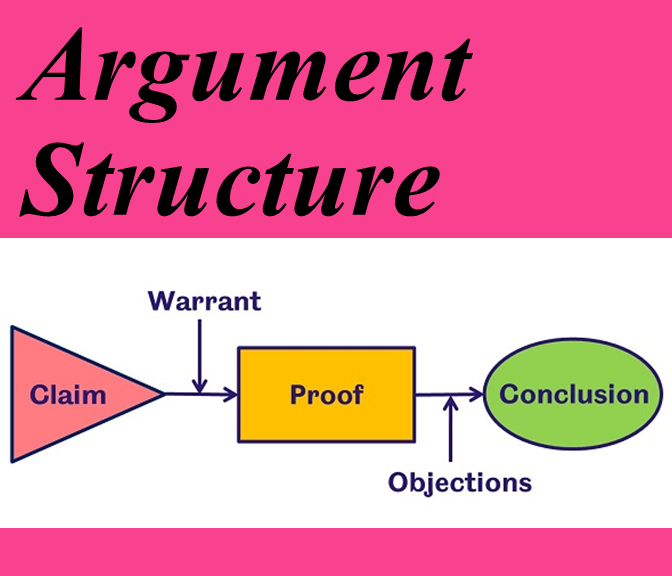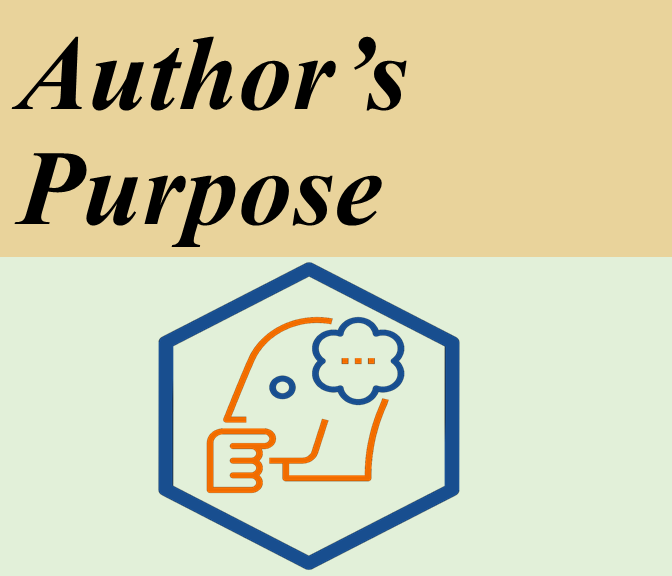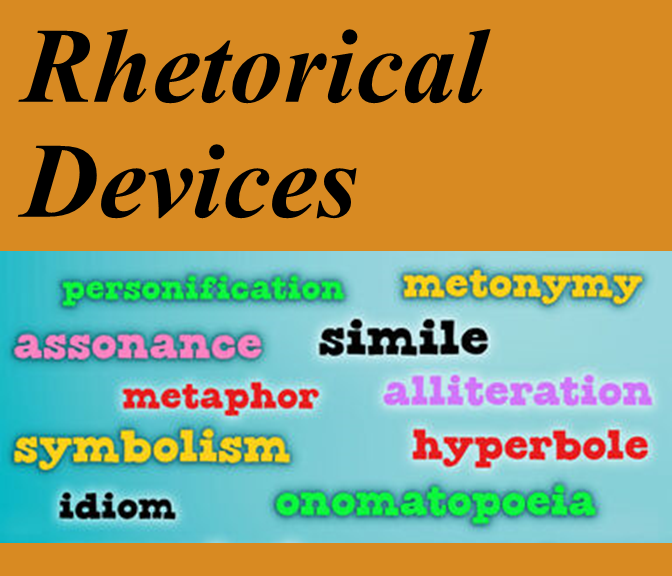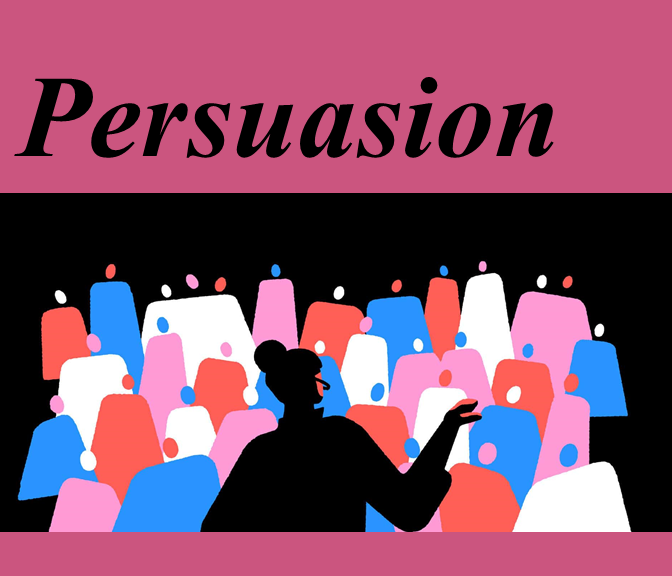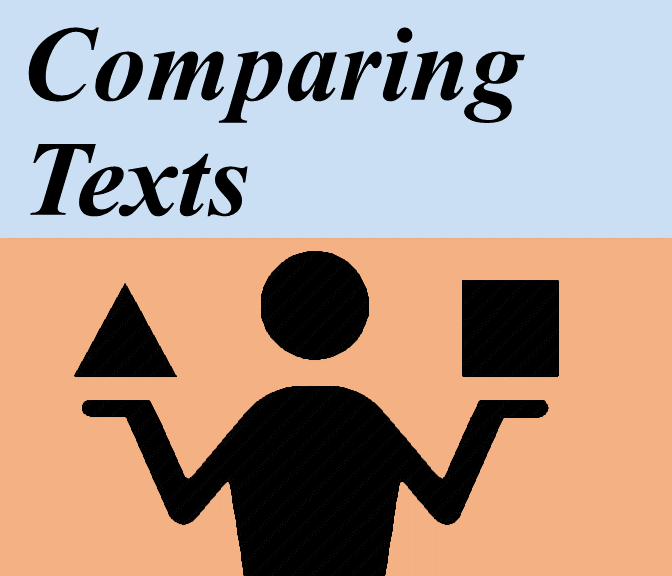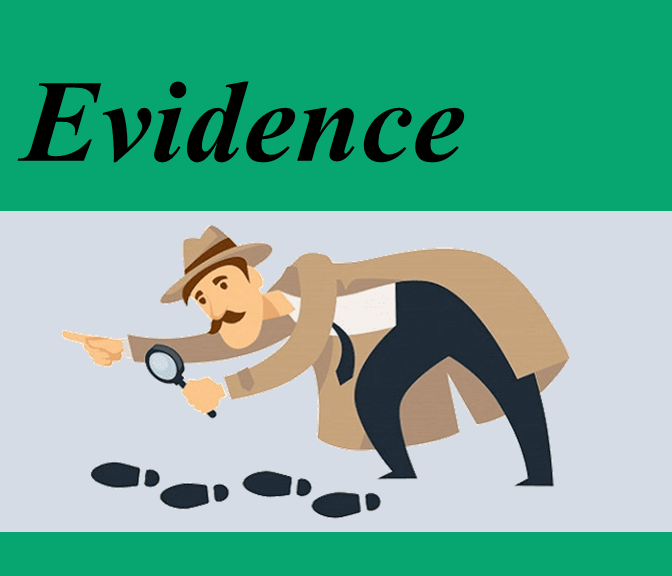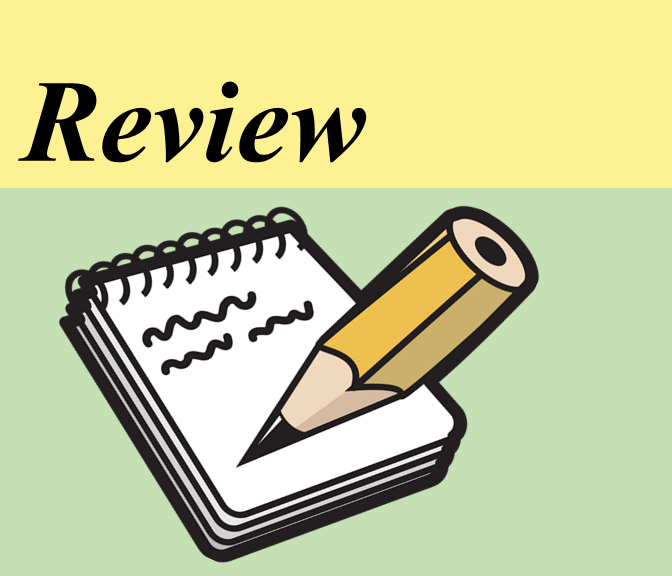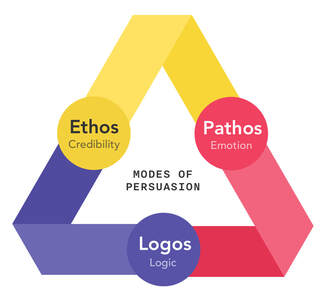Argument Analysis: Reading & Writing
Intro to Arguments
|
An argument is a rational discussion where each person advances and supports a point of view on some matter. A good argument is supported by evidence that is both relevant and adequate, which means that each piece of evidence applies to the point of the argument and also that there are enough pieces of evidence.
Watch the video for more information about argument analysis and download the text below to practice identifying relevant and adequate evidence.
|
| ||||||
Author's Purpose
Authors write for many different reasons, which usually fall into one or more of three categories: persuade, inform, or entertain. When reading an argument, the author's purpose will be to persuade the reader to their point of view using logic and evidence.
|
|
Watch the video to learn more about how to determine an author's purpose. For more practice, download the file below to answer some practice GED questions:
Extension: Read "Should We Terraform Mars?" and answer the comprehension questions.
| ||||
Elements of Persuasion
When an author writes to persuade, they try to convince readers to agree with their point of view or to do something. A good persuasive argument will start with a clearly stated position or claim about an issue or problem. This claim will then be supported by evidence, which might be facts, opinions, examples, or other pieces of information. Another effective persuasive strategy is to present a counterclaim, or response to an opposing view, which shows that the author has considered both sides of the argument.
A persuasive argument might also include some or all of the Rhetorical Appeals: egos, logos and pathos.
- Ethos (Greek for ethics) is the use of credibility or trust. The author might use quotes from experts or professionals, celebrity endorsements, or their personal qualifications to support their argument.
- Logos (Greek for logic) is the use of reason or proof. The author will rely on statistics and facts to support their argument.
- Pathos (Greek for passion) is the use of an emotional appeal. The author tries to make their audience feel a certain way (anger, pity, outrage, or any emotion), using humor, personal experiences, or anecdotal stories to support their argument.
|
Practice analyzing the elements of persuasion by downloading the practice GED questions:
|
|
| ||||
Types of Evidence
In argumentative writing, claims are supported by evidence, or reasons and information that show why readers should believe or agree with the claim. There are four types of evidence that can be used in argumentative writing, and authors may use these different types depending on their purpose and audience.
- Statistical evidence includes quantifiable data and facts, surveys and polls
- Testimonial evidence includes eye witness statements, quotes and expert or authoritative opinions
- Anecdotal evidence includes stories and personal observations
- Analogical evidence compares relationships, showing how one situation is like another
|
Read the example paragraphs, find the supporting details, and identify what type of evidence is being used:
For more practice with identifying argumentative evidence, answer the practice GED questions:
|
| ||||
Valid vs. Invalid Evidence
An important skill in analyzing arguments is being able to tell the difference between good and valid evidence vs. faulty and invalid evidence.
Being able to classify evidence into these categories will help you decide whether an argument is convincing.
- Valid evidence is relevant, or directly related to the claim. It is also reliable, which means it comes from a trustworthy source, like an expert in the field.
- Evidence can be invalid for a number of reasons. It might not come from a reliable source, might not be directly related to the claim, or it might involve inaccurate, insufficient or illogical arguments.
Being able to classify evidence into these categories will help you decide whether an argument is convincing.
|
|
Read more about types of faulty reasoning and invalid evidence here:
Answer the following practice GED questions and identify which pieces of evidence are valid and invalid:
| ||||
Argument Structure
The structure of an argument includes claims, counterclaims, reasons and evidence for the respective argument. All of these elements help readers to understand the point of view of the author.
Most argumentative essays can be broken down into a three part structure: 1) the introduction, which includes the thesis statement; 2) body paragraphs, which contain supporting details and evidence for the thesis statement; and 3) the conclusion, which summarizes the entire argument and clearly concludes why the audience should agree with the author.
In addition to this traditional structure, authors may utilize other argumentative structures, such as:
For more practice with argument structure, answer the practice GED questions and read this argumentative essay:
Most argumentative essays can be broken down into a three part structure: 1) the introduction, which includes the thesis statement; 2) body paragraphs, which contain supporting details and evidence for the thesis statement; and 3) the conclusion, which summarizes the entire argument and clearly concludes why the audience should agree with the author.
In addition to this traditional structure, authors may utilize other argumentative structures, such as:
- Pro/con - the author lists the positives and negatives related to a claim
- Refutation/proof - the author refers to an opposing viewpoint or claim and then presents evidence that this claim is false or inaccurate
- Order of importance - the author states a claim and then lists evidence in order of effectiveness, starting with the strongest evidence and moving to the weakest, or vice versa
For more practice with argument structure, answer the practice GED questions and read this argumentative essay:
|
| ||||
Rhetorical Devices
A rhetorical device is a particular use of language to achieve an effect - for example, to emphasize a significant point, attract audience attention, or create a feeling. Rhetorical devices are common in all writing, especially in speeches and arguments. There are many kinds of rhetorical devices (you can read about some of them here), but below are some common rhetorical devices.
- Alliteration - the occurrence of the same letter or sound at the beginning of adjacent or closely connected words
- Anaphora - the repetition of a word or phrase at the beginning of successive clauses
- Antithesis - a contrast or opposition between two things
- Enumeration - a list of details to create rhythm or emphasize a point
- Imagery - visually descriptive or figurative language
- Metaphor - a figure of speech in which a word or phrase is applied to an object or action that is not literal
- Onomatopoeia - a word with a sound associated with what is named
- Rhetorical questions - a question asked to create an effect or to make a point rather than to get an answer
- Simile - a figure of speech involving the comparison of one thing with another thing of a different kind
|
Practice identifying rhetorical devices in this interactive activity and in the practice GED questions:
Watch this video for more examples of rhetorical devices:
|
| ||
Comparing Texts with Different Formats
On the GED Language Arts test, you will need to compare and contrast texts that address similar topics. To do this, you examine all aspects of the texts to find similarities and differences, and look for clues that show each author's perspective, style, and tone. You may find that some texts that seem similar have big differences, and some texts that seem different may have similarities.
Sometimes, information in written texts will appear in different formats, such as tables, charts, graphs, timelines, illustrations, photographs, or maps. When comparing texts with different formats, you should look for the ways in which they present similar information.
|
Practice comparing texts with different formats with these practice GED questions:
|
| ||
Comparing Texts with Similar & Different Genres
When comparing texts with similar genres, begin by thinking about each author's perspective and tone. How are they similar or different? Then determine what each author is trying to achieve. Analyze how the structure of the text and author's style further their purpose. Finally, evaluate the overall impact and effectiveness of each text in regard to each author's purpose.
When comparing texts with different genres, or forms of writing, you may find that they cover the same topic but differ in their purpose or overall impact. One text may set out to persuade you to feel or think a certain way about a topic, while the other text may simply inform you about a topic. Each text may address the same audience, but the texts may vary in scope or emphasize different ideas.
When comparing texts with different genres, or forms of writing, you may find that they cover the same topic but differ in their purpose or overall impact. One text may set out to persuade you to feel or think a certain way about a topic, while the other text may simply inform you about a topic. Each text may address the same audience, but the texts may vary in scope or emphasize different ideas.
|
Practice comparing texts with similar and different genres with these practice GED questions: |
| ||
Argument Analysis Review
Review this quarter's curriculum with this GED practice test:
| week_10_-_argument_analysis_review.pdf |
